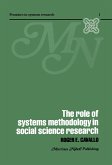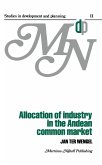Migratory farm workers provide the extra hands that are so badly needed during the planting and harvest season in the United States. Although these workers have been essential to the American agricultural system for more than a hundred years, our knowledge of them is limited and quite fragmentary; it can be divided roughly into two types of information. On the one hand, we have the statistical data collected by various censuses and the data gathered by agricultural econ omists to study the supply of and demand for farm labor. The economic aspects of farm labor generally predominate in such material. On the other, we have the scientific studies and journalistic descriptions that report on migratory farm by using a qualitative approach. The social scientists and journalists who workers have compiled these reports lived in the labor camps and have vividly described the dismal and oppressive conditions these workers must endure. The drawback of the first type of data is that its orientation to economic problems makes it too superficial and one-sided. It fails to interrelate the diverse economic factors affecting the lives and work of all farm workers, and conse quently presents a distorted and incomplete picture of migratory farm worker life. Also, because the migratory farm workers are quite elusive and usually keep a low profIle, they are often underrepresented in such data. The data gathered by using qualitative methods have the major disadvantage of being quite limited in scope.








